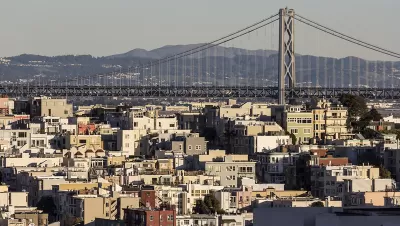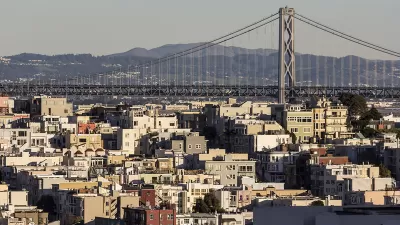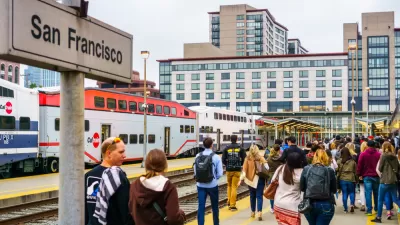The last time the San Francisco Bay Area got together to set a regional agenda on housing and transportation, the Sierra Club and the Tea Party teamed up to oppose the Plan Bay Area. A draft of the new Plan Bay Area 2040 hopes to avoid the drama.

"The only way for the Bay Area to become a relatively affordable place to live again is for cities and counties to be more tolerant of different types of housing, according to the draft of a new regional plan," writes John King.
The Association of Bay Area Governments and the Metropolitan Transportation Commission released a draft of the Plan Bay Area 2040 earlier this month, putting the region's housing challenge front and center, in addition to mapping out "spending priorities for what is estimated to be $303 billion in transportation funding during the life of the plan," according to King.
In addition to providing more detail about the agenda laid out by the draft plan, King also notes the state mandate for the plan, which requires the state to reduce greenhouse gas emissions while making room for new housing. Given that mixture of a state mandate requiring regional and local action and coordination, it shouldn't come as a surprise that an earlier version of the plan ran into opposition "from local Tea Party activists, along with organizations as disparate as the Sierra Club and the Building Industry Association of the Bay Area." This time around, according to King, "the update seems to be moving forward without fireworks."
Last Planetizen heard from Plan Bay Area 2040, the Greenbelt Alliance was touting the draft's target of 30 percent more housing in the region by 2040.
FULL STORY: Blueprint for Bay Area aims to ‘change the dynamics’ of housing crisis

Planetizen Federal Action Tracker
A weekly monitor of how Trump’s orders and actions are impacting planners and planning in America.

Chicago’s Ghost Rails
Just beneath the surface of the modern city lie the remnants of its expansive early 20th-century streetcar system.

San Antonio and Austin are Fusing Into one Massive Megaregion
The region spanning the two central Texas cities is growing fast, posing challenges for local infrastructure and water supplies.

Since Zion's Shuttles Went Electric “The Smog is Gone”
Visitors to Zion National Park can enjoy the canyon via the nation’s first fully electric park shuttle system.

Trump Distributing DOT Safety Funds at 1/10 Rate of Biden
Funds for Safe Streets and other transportation safety and equity programs are being held up by administrative reviews and conflicts with the Trump administration’s priorities.

German Cities Subsidize Taxis for Women Amid Wave of Violence
Free or low-cost taxi rides can help women navigate cities more safely, but critics say the programs don't address the root causes of violence against women.
Urban Design for Planners 1: Software Tools
This six-course series explores essential urban design concepts using open source software and equips planners with the tools they need to participate fully in the urban design process.
Planning for Universal Design
Learn the tools for implementing Universal Design in planning regulations.
planning NEXT
Appalachian Highlands Housing Partners
Mpact (founded as Rail~Volution)
City of Camden Redevelopment Agency
City of Astoria
City of Portland
City of Laramie





























